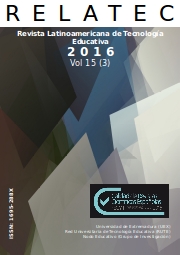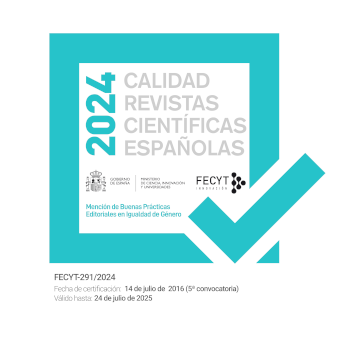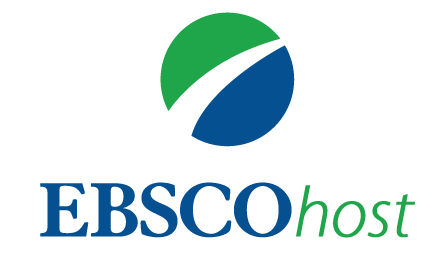Los patrones de diseño como herramientas para guiar la práctica del profesorado / The design patterns as tools to guide the practice of teachers
DOI:
https://doi.org/10.17398/1695-288X.15.3.11Palabras clave:
Formación, Universidad, Métodos de Enseñanza, Diseño Instructivo, Patrones de Diseño, Lenguaje de Patrones / Training, Higher Education, Teaching Methods, Learning Design, Patterns, Language of PatternsResumen
Los patrones de diseño permiten extraer conocimiento a partir de la práctica y pueden constituir una solución para problemas identificados en un contexto educativo particular, orientando las decisiones pedagógicas en la planificación de la actividad educativa. El uso del lenguaje de patrones ayuda a compartir dichas soluciones para su puesta en práctica en contextos educativos afines. Aunque su uso educativo resulta incipiente, se observa un interés creciente por analizar las metodologías para su elaboración y el desarrollo de sistemas de formalización que permitan llegar a un lenguaje común de su representación. En este artículo se analiza el papel de los patrones pedagógicos como herramienta para guiar la práctica del profesorado. Se presenta el resultado del diseño de patrones del aprendizaje en el contexto universitario mediante un proceso participativo entre docentes e investigadores. Este trabajo se inscribe en el proyecto de investigación «Desig2Learn: Estrategias de co-diseño en la universidad para un aprendizaje basado en la indagación y el uso intensivo de las TIC». Partiendo de un enfoque metodológico fundamentado en la investigación basada en el diseño, se han diseñado patrones que responden a distintas situaciones de enseñanza-aprendizaje relativas a procesos de indagación y potenciadas por el uso de las tecnologías digitales.
Abstract
Design patterns are designed to share knowledge about good teaching and learning so that they can be re-used and applied to improve the working time and the effort involved teachers during the design of learning environments. The main goal is to guide the pedagogical decisions in planning educational activities. Design patterns and pattern languages have been proposed as effective means to facilitate rigorous discourse, bridging theory and practice. Although research on the pedagogical patterns are scare, in recent years a lot of effort have been done analysing the most appropriate methodologies for processing and the development of systems of formalization that can reach a common representation language teaching patterns. In this article the role of educational patterns as a tool to guide the practice of teachers in designing learning environments is analysed. To do this, the result of learning design patterns in the university context is presented through the use of narrative and participatory process between teachers and researchers. This work is part of the research project «Desig2Learn: Strategies co-design at the University for inquiry-based and intensive use of ICT learning». Based on research based design, patterns have been designed to respond to different teaching-learning situations related to inquiry processes and enhanced by the use of digital technologies.
Descargas
Referencias
Alexander, C., Ishikawa, S. y Silverstein, M. (1977). A Pattern Language. Towns, Buildings, Construction. New York: Oxford University Press.
Anderson, T., Shattuck, J. (2012). Design-Based Research: A Decade of Progress in Education Research? Educational Researcher 41(1), 16–25. https://doi.org/10.3102/0013189X11428813
Brown, A.L. (1992). Design experiments: Theoretical and methodological challenges in creating complex interventions in classroom settings. The Journal of the Learning Sciences 2(2), 141-178. https://doi.org/10.1207/s15327809jls0202_2
Bruner, J. (1990). Acts of Meaning: Four Lectures on Mind and Culture Cambridge: Harvard University Press.
Chacón-Pérez, J., Hernández-Leo, D., Mor, Y., & Asensio-Pérez, J. I. (2016). User-Centered Design: Supporting Learning Designs’ Versioning in a Community Platform. In The Future of Ubiquitous Learning (pp. 153-170). Springer Berlin Heidelberg. https://doi.org/10.1007/978-3-662-47724-3_9
Collins, A. (1992). Towards a design science of education. In New directions in educational technology (pp. 15-22). Berlin: Springer. https://doi.org/10.1007/978-3-642-77750-9_2h
Conole, G. (2013). Las pedagogías de los entornos personales de aprendizaje. En L. Castañeda y J. Adell (Eds.), Entornos Personales de Aprendizaje: Claves para el ecosistema educativo en red (pp. 185-188). Alcoy: Marfil.
Conole, G., & Wills, S. (2013). Representing learning designs–making design explicit and shareable. Educational Media International, 50(1), 24-38. https://doi.org/10.1.1.845
Design-Based Research Collective (2003). Design-based research: An emerging paradigm for educational inquiry. Educational Researcher 32(1), 5-8. https://doi.org/10.3102/0013189X032001005
Derntl, M. y Motschnig-Pitrik, R. (2005), 'The Role of Structure, Patterns, and People in Blended Learning', The Internet and Higher Education, 8, 111-130. https://doi.org/10.1016/j.iheduc.2005.03.002
Frizell, S. S., & Hübscher, R. (2008). Using design patterns to support e-learning design. Handbook of research on learning design and learning objects: Issues, applications and technologies, 144-166.
Gamma, E., Helm, R., Johnson, R., and Vlissides, J. (1995). Design Patterns: Elements of Reusable Object-Oriented Software. Reading, MA: Addison-Wesley.
Goodyear, P. (2005). Educational design and networked learning: Patterns, pattern languages and design practice, Australasian Journal of Educational Technology 21 (1), 82-101. https://doi.org/10.14742/ajet.1344
Goodyear, P. y Dimitriadis, Y. (2013). In medias res: reframing design for learning. Research in Learning Technology, 21. https://doi.org/10.3402/rlt.v21i0.19909
Goodyear, P. y Retalis, S. (2010). Learning, technology and design. Technology-enhanced learning: design patterns and pattern languages, SensePublishers.
Hernández-Leo, D., Moreno, P., Chacón, J. y Blat, J. (2014). LdShake support for team-based learning design. Computers in Human Behavior, 37, 402-412. https://doi.org/10.1016/j.chb.2012.05.029
Laurillard, D. (2013). Teaching as a design science: Building pedagogical patterns for learning and technology. Routledge.
Laurillard, D. y Derntl, M. (2014). Learner Centred Design-Overview. Practical Design Patterns for Teaching and Learning with Technology (pp. 13-16). SensePublishers. https://doi.org/10.1007/978-94-6209-530-4₂
Ljubojevic, D.; Laurillard, D. (2013). The Pedagogical Patterns Collector [en línea]. Institute of Education, University of London. [Consulta: 24/11/16]. Recuperado a partir de https://dl.dropboxusercontent.com/u/7800294/PPCGuide.pdf
Marne, B., Wisdom, J., Huynh-Kim-Bang, B. y Labat, J.M. (2012). A design pattern library for mutual understanding and cooperation in serious game design. In Intelligent tutoring systems (pp. 135-140). Berlin Heidelberg: Springer. https://doi.org/10.1007/978-3-642-30950-2_18
Martínez García, A. (2009). Patrones de Diseño aplicados a la organización de repositorios de objetos de aprendizaje. RED. Revista de Educación a Distancia. Recuperado a partir de http:// www.um.es/ead/red/M10/agustina.pdf
McAndrew, P., Goodyear, P., y Dalziel, J. (2006). Patterns, designs and activities: unifying descriptions of learning structures. International Journal of Learning Technology, 2(2-3), 216-242. https://doi.org/10.1504/IJLT.2006.010632
Mor, Y. y Winters, N. (2007). 'Design approaches in technology enhanced learning', Interactive Learning Environments 15 (1), 61-75. https://doi.org/10.1080/10494820601044236
Mor, Y. y Mogilevsky, O. (2013). The learning design studio: collaborative design inquiry as teachers’ professional development. Research in Learning Technology, 21. https://doi.org/10.3402/rlt.v21i0.22054
Mor, Y. y Warburton, S. (2015). Practical Patterns for Active and Collaborative MOOCs: Checkpoints, FishBowl and See Do Share. eLearning, 48.
Mor, Y. y Winters, N. (2010). Participatory design in open education: a workshop model for developing a pattern language. Journal of Interactive Media in Education, 2008(1), Art-12.
Mor, Y., Mellar, H., Warburton, S., & Winters, N. (Eds.). (2014). Practical design patterns for teaching and learning with technology. Springer. https://doi.org/10.1007/978-94-6209-530-4
Reigeluth, C. M. (Ed.). (2013). Instructional-design theories and models: A new paradigm of instructional theory (Vol. 2). Routledge.
Retalis, S.; Georgiakakis, P. y Dimitriadis, Y. (2006), 'Eliciting design patterns for e-learning systems', Computer Science Education 16 (2), 105-118. https://doi.org/10.1080/08993400600773323
Rodríguez Jimenez, J. M. (2009). Patrones pedagógicos en educación virtual. RED. Revista de Educación a Distancia. Recuperado a partir de http://www.um.es/ead/red/M10/rodriguez.pdf
Seoane Pardo, A. M., y García Peñalvo, F. J. (2014). Patrones pedagógicos y docencia en red. Formación en Red: Aprender con tecnologías digitales. 30-47
Winters, N. y Mor, Y. (2008). IDR: a participatory methodology for interdisciplinary design in technology enhanced learning, Computers and Education, 50(2), 579-600. https://doi.org/10.1016/j.compedu.2007.09.015
Yang, D. F., & Goodyear, P. (2008). Design patterns: An effective approach towards representing the knowledge of experienced teachers.
Descargas
Archivos adicionales
Publicado
Número
Sección
Licencia
Los autores/as que publiquen en esta revista aceptan las siguientes condiciones:
1. Los autores/as conservan los derechos de autor y ceden a la revista el derecho de la primera publicación, con el trabajo registrado con la licencia Creative Commons Reconocimiento-NoComercial-SinObraDerivada 4.0 International (CC BY-NC-ND), que permite a terceros utilizar lo publicado siempre que mencionen la autoría del trabajo y a la primera publicación en esta revista.
2. Los autores/as pueden realizar otros acuerdos contractuales independientes y adicionales para la distribución no exclusiva de la versión del artículo publicado en esta revista (p. ej., incluirlo en un repositorio institucional o publicarlo en un libro) siempre que indiquen claramente que el trabajo se publicó por primera vez en esta revista.
3. Se permite y recomienda a los autores/as a publicar su trabajo en Internet (por ejemplo en páginas institucionales o personales) antes y durante el proceso de revisión y publicación, ya que puede conducir a intercambios productivos y a una mayor y más rápida difusión del trabajo publicado (vea The Effect of Open Access).









